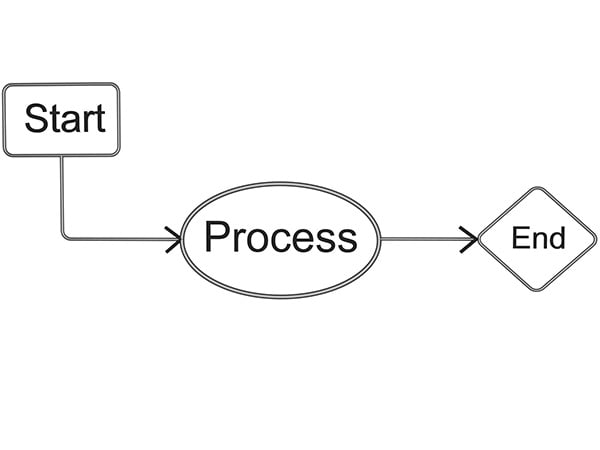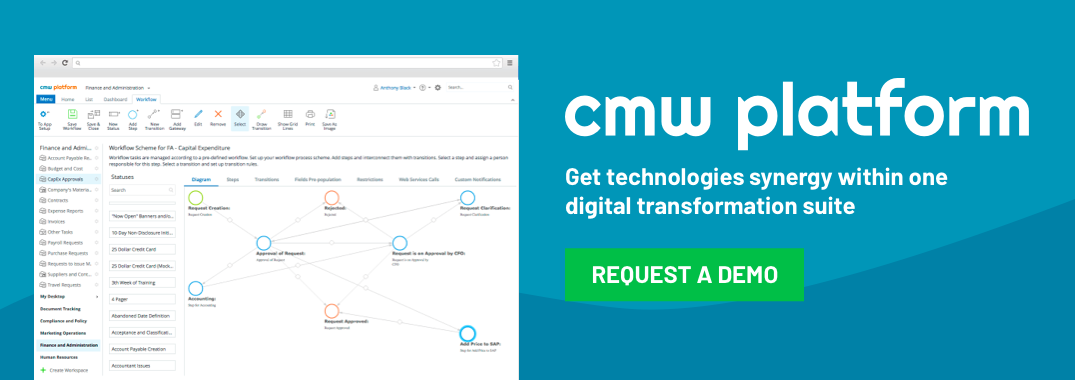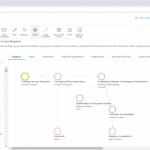What Is End-To-End Process
April 12, 2023
BPM is full of terms that are either ambiguous (which is inevitable to some extent) or taken for granted. One term that no one bothers to explain is “end-to-end process”.
Some people believe it means a process spanning through the organization from one end to another. However, it’s rather the description of a cross-functional process. End-to-end characteristic of a process emphasizes another aspect: it’s a process that comprises all the work that should be done to achieve the process goal. Therefore, end-to-end means “from the very beginning to the very end”.
End-to-end characteristic of a process emphasizes another aspect: it’s a process that comprises all the work that should be done to achieve the process goal. Therefore, end-to-end means “from the very beginning to the very end”.
But what exactly are these “very beginning” and “very end”? That’s the most interesting question.
The answer depends on the perspective and context. The “end-to-end” clarification is the appeal to pay more attention to the context and ask yourself and the process team what is the business problem and how does it map to the process. Like in the case below.
Case #1: Energy
A company in the energy industry owes and operates heating equipment (boilers, pipelines etc.) at thousands of small towns scattered across Siberia. For these settlements it’s the key infrastructure component, taking into account long and severe winters.
The company requested the “Purchase order approval” process automation. This is the core process that supplies each site with necessary equipment (boilers), components (valves), materials (pipes), repair kits and related services. These items are purchased annually as a preparation for the cold season.
According to the customer, the major process activities are:
Processing thousands of initial applications with grouping and ungrouping, conducting dozens of tenders is a challenge by itself, especially if the only tools available are Excel and e-mail. Besides the requestor should be able to asynchronously amend or cancel a request already being processed – this requirement complicates the process considerably.
Business process analysis and automation with the help of BPMS looks well justified. Business case is obvious because a lot of money is at stake and losses are large if the process fails. It’s also worth to mention that it isn’t only about finances: just imagine, a small township in sub-arctic climate not properly prepared for the winter.
OK, here is the case – should we build a project team and project plan and go for it? Or should we stop for a while and re-think the business problem?
Please leave your thoughts and suggestions below. (The case will be continued in a week.)
Some people believe it means a process spanning through the organization from one end to another. However, it’s rather the description of a cross-functional process.
 End-to-end characteristic of a process emphasizes another aspect: it’s a process that comprises all the work that should be done to achieve the process goal. Therefore, end-to-end means “from the very beginning to the very end”.
End-to-end characteristic of a process emphasizes another aspect: it’s a process that comprises all the work that should be done to achieve the process goal. Therefore, end-to-end means “from the very beginning to the very end”. But what exactly are these “very beginning” and “very end”? That’s the most interesting question.
The answer depends on the perspective and context. The “end-to-end” clarification is the appeal to pay more attention to the context and ask yourself and the process team what is the business problem and how does it map to the process. Like in the case below.
Case #1: Energy
A company in the energy industry owes and operates heating equipment (boilers, pipelines etc.) at thousands of small towns scattered across Siberia. For these settlements it’s the key infrastructure component, taking into account long and severe winters.
The company requested the “Purchase order approval” process automation. This is the core process that supplies each site with necessary equipment (boilers), components (valves), materials (pipes), repair kits and related services. These items are purchased annually as a preparation for the cold season.
According to the customer, the major process activities are:
- A field engineer performs on site equipment inspection and submits a list of needs.
- The needs list goes for approval to district and regional levels and finally to the headquarters. The application can be adjusted on the way, returned back for revision, etc.
- The needs are subject to aggregation: similar items are summarized at each level. The reason for this, is to combine a large order e.g. to pipes that would get better price from a manufacturer than small ones.
- The portion of total needs can be satisfied by goods on stock but most part should be purchased. Headquarters creates a set of purchase requests, splitting the total needs list by goods/services type and/or suppliers. Therefore, the individual needs from each site are first grouped and then ungrouped.
- A separate tender is announced and conducted for each purchase request, the best vendor is selected for each, contracts are negotiated and signed.
Processing thousands of initial applications with grouping and ungrouping, conducting dozens of tenders is a challenge by itself, especially if the only tools available are Excel and e-mail. Besides the requestor should be able to asynchronously amend or cancel a request already being processed – this requirement complicates the process considerably.
Business process analysis and automation with the help of BPMS looks well justified. Business case is obvious because a lot of money is at stake and losses are large if the process fails. It’s also worth to mention that it isn’t only about finances: just imagine, a small township in sub-arctic climate not properly prepared for the winter.
OK, here is the case – should we build a project team and project plan and go for it? Or should we stop for a while and re-think the business problem?
Please leave your thoughts and suggestions below. (The case will be continued in a week.)



